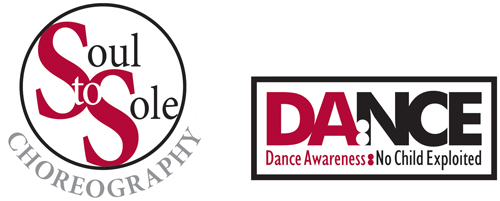Do you know that one of your goals during rehearsal is to grow dancers into living stones? First Peter 2:5 says, “You also, like living stones, are being built into a spiritual house, to be a holy priesthood, offering spiritual sacrifices acceptable to God through Jesus Christ.” Soul to Sole Choreography is structured to grow dancers to reflect ‘the rock’ as they work on a particular ministry dance. After all, if dancers are not committed to Jesus, what’s the point of working with them over the long haul to present dances that visualize faith?
During the process of rehearsal, remember what it means to respond to people instead of react to them. It’s all about being Spirit-led and Spirit-filled. Tell yourself the truth about yourself so that you can help your dancers grow in faith and movement as you reflect Jesus. Plan on using a wide range of people and abilities. Living stones may include a group of trained dancers or a rock pile of congregational (untrained) dancers. As you pray in preparation for the first gathering, make sure that you chisel hearts with the following:
1. All dances designed within PIM rehearsal, either with children or adults, should be molded to encourage participants to grow in their understanding of the identified biblical concept.
2. If possible, participants should be allowed to make choices within a warm-up and/or dance to encourage thinking skills and ownership. Use genesis to access the movement base of both trained and untrained dancers. Be clear in your conceptual descriptions to get movement material designed to fit the dance you are working on.
3. The choreographer should take responsibility to make sure each dancer is successful throughout the process of PIM rehearsal unless you are dealing with a dancer that exhibits a bad attitude. A bad attitude needs to be addressed as a separate, individual issue. It is your responsibility to teach in a way that builds movement success. Don’t use words to discourage your dancers.
4. Be flexible in your choreography choices. Cut even simple movements that one or more participants can’t correctly do and choose new movements that participants can easily execute. Movements that are not done within the technical range of participants distract from a sense of worship and often takes the focus off the biblical concept in the dance.
5. People learn movement information in different ways. Some learn motion quickly while others take much longer. Be patient and encourage everybody (including yourself) as you rehearse.
6. Do not encourage faith, movement, or personality comparisons between dancers. Galatians 6:4-5 teaches us, “Each one should test their own actions. Then they can take pride in themselves alone, without comparing themselves to someone else, for each one should carry their own load.” This means that each dancer can be used within the technical and personality base he or she possesses to grow spiritually in the rehearsal process. If dancers compare themselves either as better or worse in any area than others, talk to them and work this issue through. Acknowledging differences in a truthful manner (and even verbalizing them in a rehearsal) is often needed to combat unhealthy comparisons.
Examples:
(a) One dancer has a Master’s in ballet. Another dancer has a technical base just beyond a beginning level in jazz.
(b) One dancer comes from a stable Christian home with a responsive heart to Jesus while another dancer comes into dance ministry new to Christ with a rebellious heart and no foundational teaching.
(c) One dancer is outgoing and one dancer is shy.
We can’t begin to compare the two dancers and expect the same maturity and/or abilities from both. On the other hand, it doesn’t mean these issues are not addressed during the course of rehearsal. As God leads, you may say nothing related to these issues or you may challenge and exhort a dancer to make some changes. Trust God to help you.
7. The PIM rehearsal covenant should set high expectations between each living stone dancer and the Lord. Release yourself from feeling bad when other motives for program participation are discovered.
8. Encourage dancers to participate in dance classes and Bible studies to strengthen technical skills and spiritual depth.
How are you doing in your life and in choreography? Does the rehearsal process include The Rock as you create dances for ministry?
